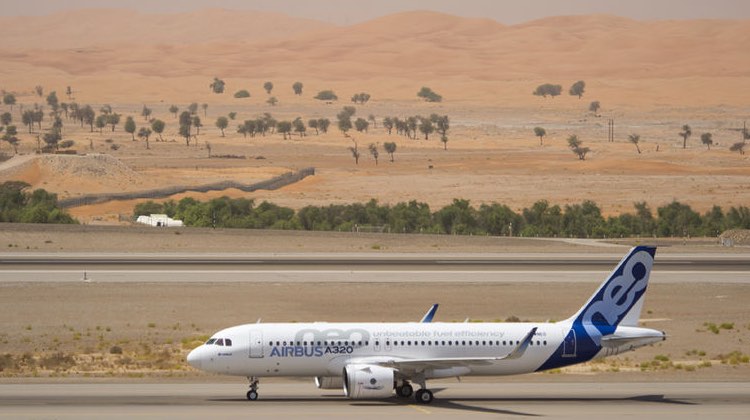
Airbus is on track for the first A320neo delivery next month after achieving joint EASA and FAA type certification for the aircraft, five years and over 4,300 orders after it was first announced.
“This double seal of approval represents a great achievement for Airbus. It recognises the hard work performed by all the teams at Airbus and Pratt & Whitney. It demonstrates the A320neo is meeting all requirements,” said Fabrice Brégier, Airbus president and CEO.
“The A320neo is now cleared for its first delivery and ready to offer many airlines its winning combination of unbeatable economics and outstanding cabin comfort.”
Initial certification applies to the A320neo variant powered by Pratt & Whitney’s Pure Power PW1100G-JM following a 350 flight, 1,070 flight hour, three aircraft flight test campaign. Certification of the A320neo with CFM International’s LEAP-1A is due “in the coming months,” Airbus said, with certification of the stretched A321neo and shorter A319neo with both engines options to follow.
Airbus is promising a raft of improvements with the A320neo family. Efficiency gains include up to 20 per cent fuel burn savings compared with the current generation of aircraft, additional range, lower engine noise and fewer environmental emissions.
These gains largely come from a new generation of engines: the Pure Power PW1100G-JM, still commonly referred to as the Geared Turbofan (GTF), and the LEAP-1A.
In addition to the range and efficiency gains for existing A320ceo (for Current Engine Option) routes, Airbus is also hoping the A321neoLR, with its additional belly fuel tanks, can fill the long and thin narrowbody niche currently occupied by the Boeing 757-200 (see Australian Aviation, December 2014). This “Middle of Market” aircraft has been a preoccupation of much of the industry this year, and a step towards the A321neoLR as a replacement for the older 757s will certainly be welcomed.
Qatar Airways is expected to take delivery of the first customer A320neo in December, and holds orders for 50 of the type, split between A319neo, A320neo and A321neo models.
Closer to home the Qantas Group has 99 A320neo aircraft on order for delivery between 2016 and 2022, ostensibly destined for Jetstar to replace older A320s and to cover growth, although it has not ruled out operating the aircraft on Qantas mainline domestic services to replace 737s. (Mainline Qantas received its last factory-fresh Boeing 737-800 with the original Retro Roo, VH-XZP, a year ago this month, but has not yet announced a decision on its future mainline narrowbody fleeting.)
Virgin Australia, meanwhile, has decided on the Boeing 737 MAX, with 40 737 MAX 8 aircraft (the successor to the 737-800 variant) on order for delivery from 2018. Virgin’s partner Air New Zealand has 13 A320neo Family aircraft on order for its trans-Tasman and Pacific Islands operation, currently comprising three A321neo and ten A320neo versions.
Overall, Airbus has around 60 per cent of the next-gen narrowbody market compared with Boeing’s 40 per cent. Boeing announced on Tuesday (US time) that it will roll out (“celebrate”) the first 737 MAX on December 8.











